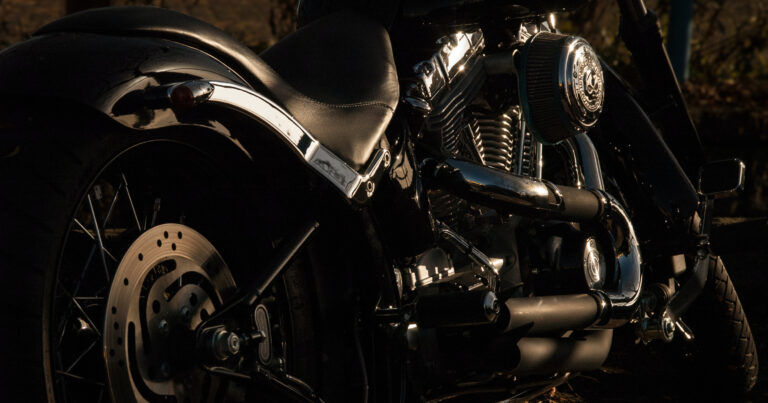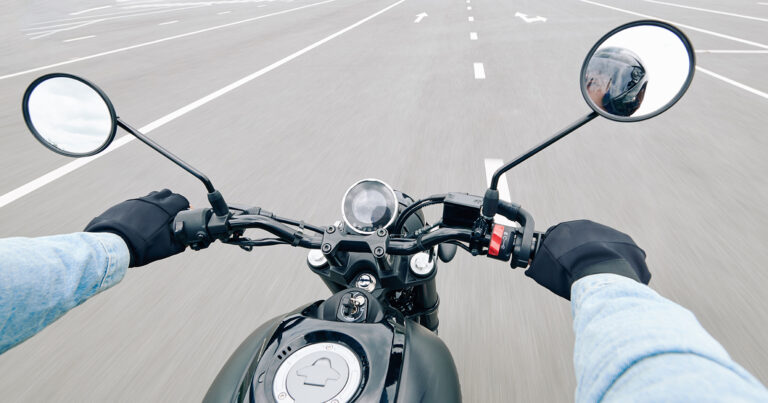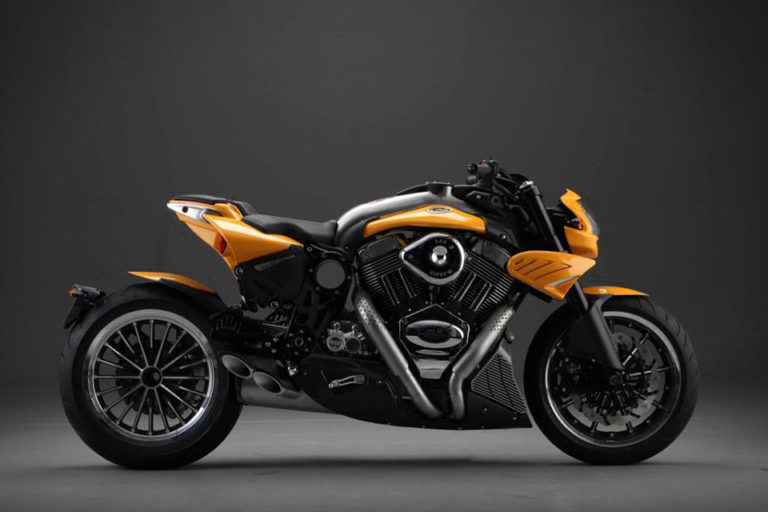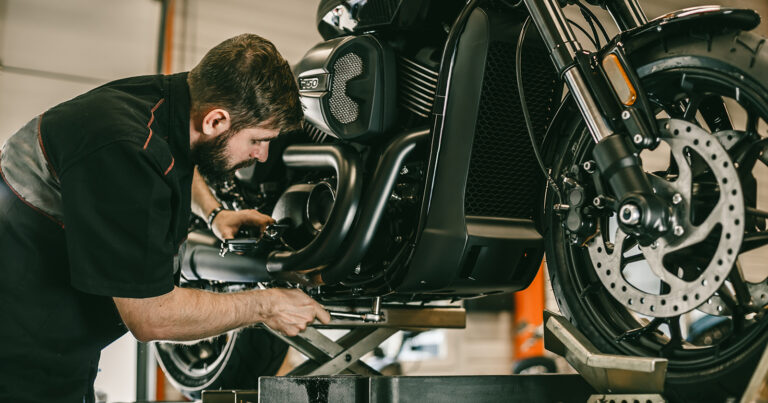Harley Davidson Intake Leak Symptoms
This post may contain affiliate links. That means if you click and buy, we may receive a small commission (at zero cost to you). Please see our full disclosure policy for details.
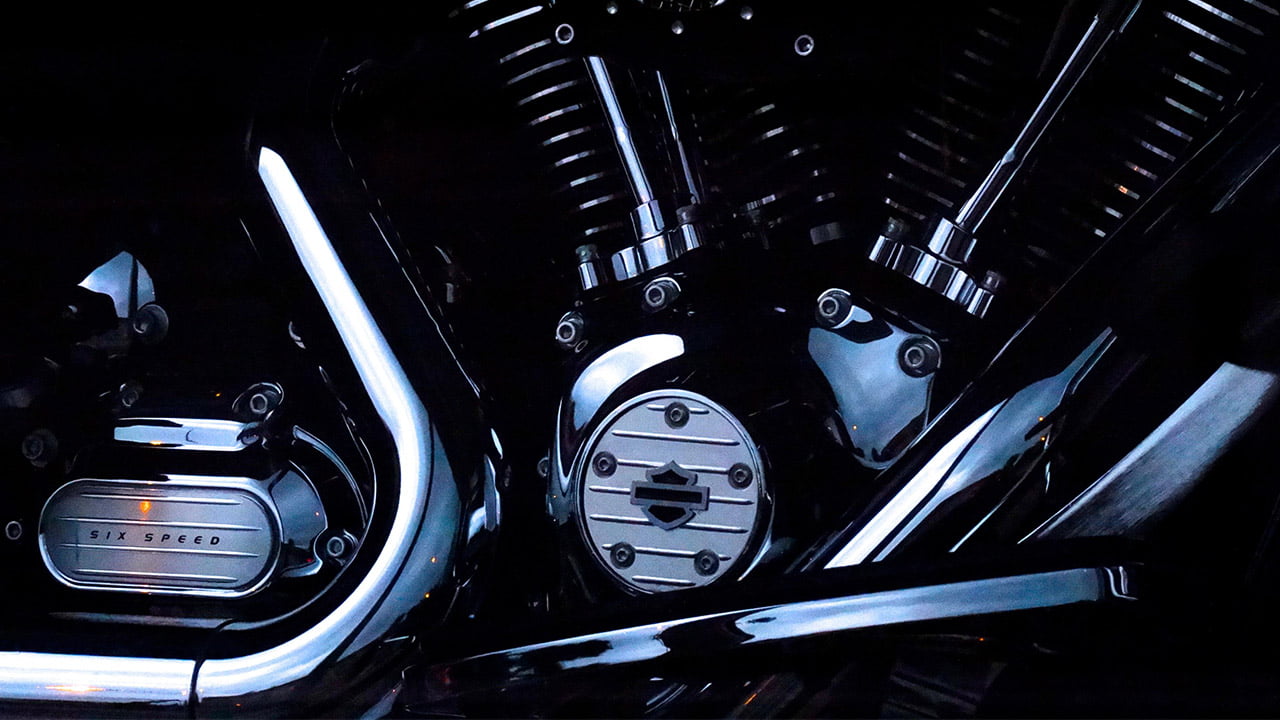
There are a couple of general issues you’ve got to be prepared to face when dealing with motorcycle engines. From mechanical to electrical, natural, and even human causes, problems with your bike can be frustrating. One of the most common issues riders face is an intake leak. Left unchecked, this can create serious problems for your Harley Davidson, reducing overall engine life, performance, and resale value.
Understanding Harley Davidson intake leak symptoms is the first step to protecting your motorcycle. What are the warning signs you should look out for when the intake manifold, vacuum hose, or throttle body starts to fail? Can you still ride with an air leak in the system? And most importantly—how do you fix it before it causes more damage? This guide will answer those questions and more.
An intake leak can be a sneaky issue that gradually affects your motorcycle’s engine performance and reliability. It happens when unmetered air enters the intake area, disrupting the precise air-fuel mixture needed for proper combustion in the combustion chamber. This imbalance leads to a variety of Harley Davidson intake leak symptoms that may seem unrelated at first but are actually directly connected to the leak.
What is an intake leak?
An intake leak usually occurs when there are cracks or gaps in a portion of the intake tract beyond your fuel delivery system. The leak can happen anywhere between the cylinder head and the carburetor slide, including the intake manifold, gaskets, seals, or vacuum hoses. When this occurs, the intake manifold unintentionally sucks in outside air, rather than properly dispersing the air-fuel mixture into the combustion chamber. This unmetered air disrupts the engine’s air-fuel ratio, leading to a lean mixture that can cause a variety of performance issues. Common symptoms include poor fuel economy, decreased acceleration, engine misfires, rough idle, and even unexpected backfiring. Over time, if left unaddressed, an intake leak can cause increased engine temperature, damage to internal components, and reduced overall engine performance. It is important to regularly inspect the intake system for signs of wear or damage, such as cracked rubber boots, deteriorated gaskets, or loose clamps, as these are common points where leaks develop. Proper maintenance and timely repair of intake leaks help ensure your Harley Davidson motorcycle runs smoothly and efficiently, preserving both its power and longevity.
How do I diagnose intake leaks?
Diagnosing an intake leak requires simple observation and a few tests. Riders should pay close attention to unusual idle behavior such as high idle, hesitation during acceleration, rough running, or backfires.
Spray carb cleaner or starter fluid around the suspected intake area while the motor is idling. If the engine rpm changes, you’ve found a leak.
A propane test can also be used in hard-to-reach back side areas.
Some mechanics pull the clutch, shut the throttle, and watch how quickly revs drop. Sudden or hanging revs often point to an intake issue.
Listening for smoke puffs, hissing air, or odd sounds near the flanges and manifold can also reveal trouble.
For forum-style DIY help, you’ll often see riders post a discussion starter or share discussion starter threads with a gallery embed, insert image, or insert link to show their setups. You may even notice toggle bb code, bb code remove, or insert quotes related threads as they redo drafts and share fixes with a forum community dedicated to Harley Davidson maintenance. Reading advice from forums top contributors or members who joined 2011 often provides a small tip that makes diagnosis easier.
This video explains it very well. https://www.youtube.com/watch?v=oKVHqCJN2LU
Common Causes of Intake Leaks
Understanding the causes of intake leaks is crucial. Common culprits include cracked or damaged intake manifolds, worn or misaligned gaskets, faulty seals, deteriorated vacuum hoses, or even a loose air cleaner. Environmental factors like heat, vibration, pressure, and age can contribute to the wear and tear of these components, increasing the risk of vacuum leaks over time.
In Harley Davidson motorcycles, especially older models, leaks often come from improper carburetor support or misaligned intake ports at the heads. Riders who install aftermarket parts without correct adjustment sometimes cause gaps where excess air is sucked in. This unmetered air increases idle speed, reduces fuel efficiency, and may lead to engine overheating.
What are the Symptoms of Leaking Intake Manifold?
Harley Davidson Intake Leak Symptoms
Power Loss
Hesitation to Lean Issues
Engine Overheating
Low Oil Pressure
Bad Oil Viscosity
Air intake leaks manifest in several noticeable and subtle ways that can affect your Harley Davidson’s performance and reliability.
Usually, when there’s an intake leak, the balance between the amount of air and fuel flowing into the engine is disrupted. This imbalance causes the engine to run leaner than intended, meaning there is too much oxygen and not enough fuel in the combustion chamber. As a result, the additional oxygen mix increases engine temperature, which can lead to overheating and potential damage to engine components. This lean condition also negatively impacts engine performance, causing reduced power output, rough running, and hesitation during acceleration.
One of the most common and easily noticeable symptoms of an intake leak is a high idle. If you observe that your bike suddenly starts idling higher than normal for no apparent reason, it could be a sign of a vacuum leak in the intake manifold. This happens because unmetered air entering the system causes the engine control unit (ECU) or carburetor to compensate by increasing idle speed.
Another typical symptom is hanging revs. This occurs when the engine revs drop immediately after you pull the clutch in and close the throttle abruptly but then linger or “hang” at a higher RPM than expected before settling down. Hanging revs indicate that excess air is entering the intake system, preventing the engine from smoothly reducing speed. This symptom often points directly to an intake leak.
Other symptoms include hesitation or stumbling during acceleration, which happens because the engine is not receiving the correct air-fuel mixture needed for smooth combustion. You might also notice backfiring or popping sounds, especially during deceleration, due to the lean mixture igniting unevenly.
Intake leaks can also cause low oil pressure and bad oil viscosity indirectly. When the engine runs lean and hotter than usual, it can affect oil performance and circulation, leading to reduced lubrication efficiency and increased wear on engine parts.
Additionally, you might experience difficulty starting the engine or rough idling, especially when the engine is cold. These symptoms occur because the intake leak causes inconsistent air flow, making it hard for the engine to maintain a stable idle.
In summary, the key Harley Davidson intake leak symptoms to watch for include:
- Sudden high idle without a clear cause
- Hanging or erratic revs after clutch engagement
- Hesitation or stumbling during acceleration
- Backfiring or popping noises
- Engine overheating
- Low oil pressure or changes in oil viscosity
- Difficulty starting and rough idle
Recognizing these symptoms early can help you diagnose an intake leak before it causes more serious engine damage or costly repairs. Regular inspection and maintenance of intake components such as gaskets, seals, vacuum hoses, and the intake manifold itself are essential to keep your Harley Davidson running smoothly and efficiently.
How do you fix an intake leak?
Here’s the truth: diagnosing is the hardest part—repair is usually straightforward. If you’re confident with manual repair skills, you can:
- Replace worn gaskets, cracked vacuum hoses, or loose seals.
- Reseat the intake manifold to the cylinder heads with proper alignment.
- Refit or install new carburetor O-rings or throttle body seals.
- Inspect and clean the air filter and air cleaner housing.
- Check the fuel injection system and throttle position sensor (TPS) for proper function.
Temporary fixes like gasket maker may work, but for long-term results, always use OEM parts instead of unreliable aftermarket solutions.
Some riders prefer to insert quotes related threads or link to related threads in a forum community where members exchange fixes, share pictures, and redo drafts of step-by-step guides. That way, you can see detailed advice before putting your bike back together.
If you’re unsure, a qualified mechanic can use smoke machines, spray tests, or brake cleaner to accurately diagnose and replace problem parts.
Final Thoughts
The truth is that the earlier you diagnose an intake leak, the better. The increased temperatures in your engine will begin to cause major damage with time. The low-fuel mixture will burn fast. This would be more than your engine cooling system can manage and you can end up with a coolant leak on top and will need to do some major replacing.
Ignoring intake leak symptoms can lead to severe engine problems such as warped cylinder heads, damaged pistons, and compromised combustion chambers. These issues not only reduce your Harley Davidson’s performance but can also result in costly repairs that might have been avoidable with timely maintenance. Additionally, running the engine with a lean air-fuel mixture caused by an intake leak puts extra stress on internal parts, increasing wear and reducing overall engine life.
Here’s a piece of advice you may not get elsewhere: ‘do not use aftermarket air parts to fix Harley Davidson intake leaks. Go for the OEM air parts.’ OEM parts are specifically designed to fit and function correctly with your motorcycle’s intake system, ensuring a proper seal and optimal performance. Aftermarket parts, while sometimes cheaper, may not provide the precise fit or quality needed, potentially leading to recurring leaks or other complications.
If you’re in doubt, then try to contact Harley Davidson customer service support. They can provide guidance on the right parts and procedures to fix intake leaks effectively. Regular inspections, combined with using genuine parts, will help you enjoy the full performance and longevity of your Harley Davidson bike.
Enjoy the full performance of your Harley Davidson bike, and bye for now!
Read More
- What Causes Backfire Through Intake?
- Top 7 Best Air Cleaner For Sportster 1200
- Top 6 Best Air Cleaner For Harley Davidson 103
- Understanding CC in motorbikes
- Best Motorcycle Lift Table for Harley Davidson
- Best Motorcycle Cargo Nets
- How to Register a Custom Built Motorcycle


